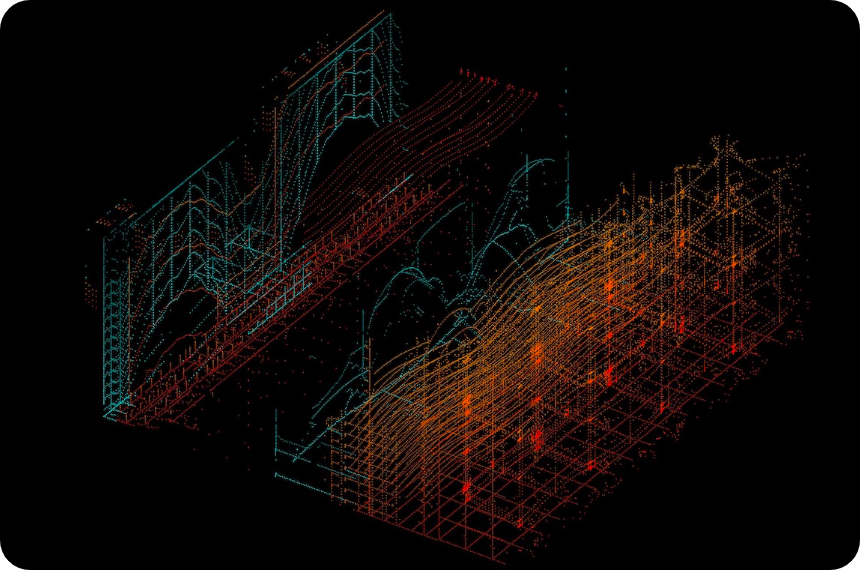PXL DEX: Redefining Onchain Art with Pixels and Tokens

In recent times, there's been a wave of experiments tying NFTs and fungible ERC-20s more tightly together. Think DN-404, ERC-20z, Apptokens, etc.
But what happens when an artist dives in at this crossroads to make an entirely new kind of onchain artwork?
We got a glimpse at the possibilities here this month, as Kim Asendorf just released his latest series PXL DEX.
"PXL DEX reduces both fungible and non-fungible tokens to their abstract minimum:
— FLAMINGO 🦩 (@FLAMINGODAO) January 16, 2025
a single pixel, a single point of light that can be kept in a virtual box" - @KevinBuist
PXL DEX by @kimasendorf pic.twitter.com/IBXs9iQHWz
Asendorf is a German visual artist who specializes in digital conceptual art. People in the NFT space are most likely to recognize his work via collections like Cargo and SABOTAGE.
His creations challenge viewers to reflect on their relationship with technology, presenting both simple and complex digital worlds for interpretation. This same spirit unsurprisingly animates PXL DEX.
Congrats to @kimasendorf on the release of PXL DEX, thrilled to see dynamic artworks onchain receiving so much positive attention and deserved acclaim.
— Material Protocol Arts (@material_work) January 22, 2025
PXL DECK 175, owned by @matto__matto
2025 looking to be a great year for art on Ethereum 🫡 pic.twitter.com/nVvlX7akBd
Yet PXL DEX stands out in Asendorf's oeuvre in the way that it combines both NFTs and ERC-20 tokens toward achieving dynamism and interactivity.
How PXL DEX works
When collectors minted one of the 256 PXL DEX NFTs, they simultaneously minted a corresponding number of PXL tokens (ERC-20).
By default, 50,000 PXL tokens fill the NFT, starting its pixelated animation. Collectors could mint up to 500,000 PXL tokens during the initial minting, plus they can later choose to add more.
Each PXL token represents a pixel within the NFT’s animation, with the number of PXL tokens determines the artwork's density, from faint and minimal to dense and vibrant.
a contract review of PXL DEX by @kimasendorf
— marka (@marka_eth) January 21, 2025
a phenomenal collection minting now
intriguingly mixing erc721 & erc20 tokens
🧵👇 [1/18] pic.twitter.com/H1nY6BCY9G
Accordingly, collectors can adjust their Deck’s appearance over time by depositing or withdrawing PXL tokens, curating the animation’s complexity.
All elements of the NFTs—animations, metadata, and visuals—are notably stored directly on Ethereum, i.e. fully onchain. There's no reliance on private servers, Arweave, IPFS, etc.
As for the animations, they're rendered in real-time using custom WebGL and shader coding, and they can become so complex that they essentially become impossible to convey.
"At the blockchain level it's technically possible to add infinitely more PXL to a Deck, but eventually it will strain the ability of any computer to render the animation," as the critic and filmmaker Kevin Buist noted in his editorial Tokenizing Pixels.
Why it matters
Speaking of Buist, he also perfect summarized why PXL DEX is artistically significant in that same editorial:
"Digital art, particularly when made from the ground up with custom code, lends itself naturally to the kind of broad conceptual questions that move past the visual content of a work and straight to the heart of what a thing is and what it does. The animations of PXL DEX are beautiful and entrancing, but this is not a screensaver. This is a series that probes the borders of what screen-based work can be, which also involves the viewer/collector in a way that pushes beyond perception into collaboration."
That said, PXL DEX is onchain not just for the sake of being onchain, but specifically to use tokens to enable the very collaboration that the series artistically and foundationally springs from.
But another reason why PXL DEX is significant is because what it will inspire going forward—both in the artist and across the wider cryptoart community.
What I mean with regard to Asendorf is that he's only just beginning to dig into the possibilities here, as he's planning more PXL releases in the future.
"PXL DEX is the first artwork within the PXL ecosystem, an ongoing work series to experiment with pixels as utility tokens," he's explained.
I don't want to rank or say what project is best, but PXL DEX by @kimasendorf is a gorgeous and thoughtful piece of work. Visually stunning, exploring the medium's native capabilities and self-releasing the work. Excited about what's coming this year. pic.twitter.com/gLjIF9elh5
— rudxane (@rudxane1) January 21, 2025
This collection has already become a sensation with more than a few cryptoart and fully onchain connoisseurs, so the prospects of more and potentially larger related experiments is something collector types will want to track in the months ahead.
And then as far as the community goes, it's no stretch to assume that PXL DEX will inspire a new wave of hybrid NFT and ERC-20 projects that are explicitly artistic in nature rather than directly tied to games, PFPs, etc. So that's another thread you'll want to keep an eye on.
This new release may fly under the radar for many as niche. But for those of us who do zoom in, it reminds us that the line between creator and audience is increasingly being blurred in onchain art, and in that blurring, even more experiments and opportunities are on the way.